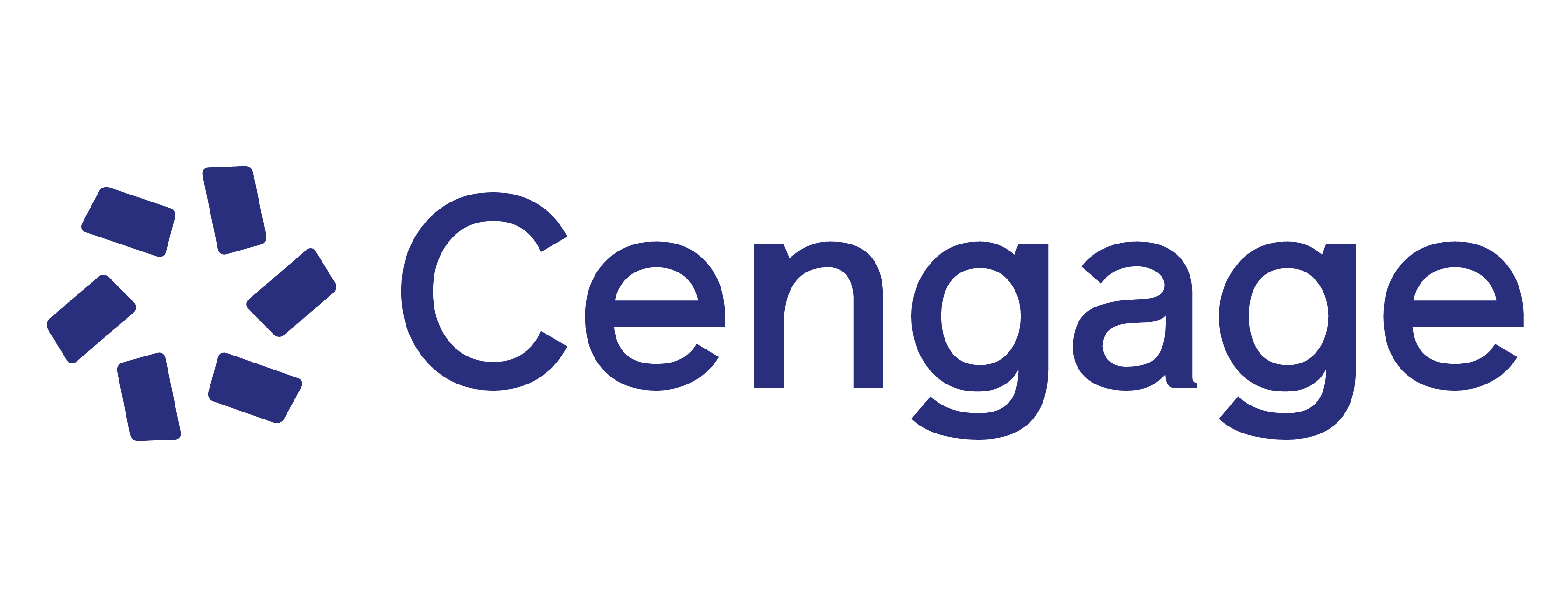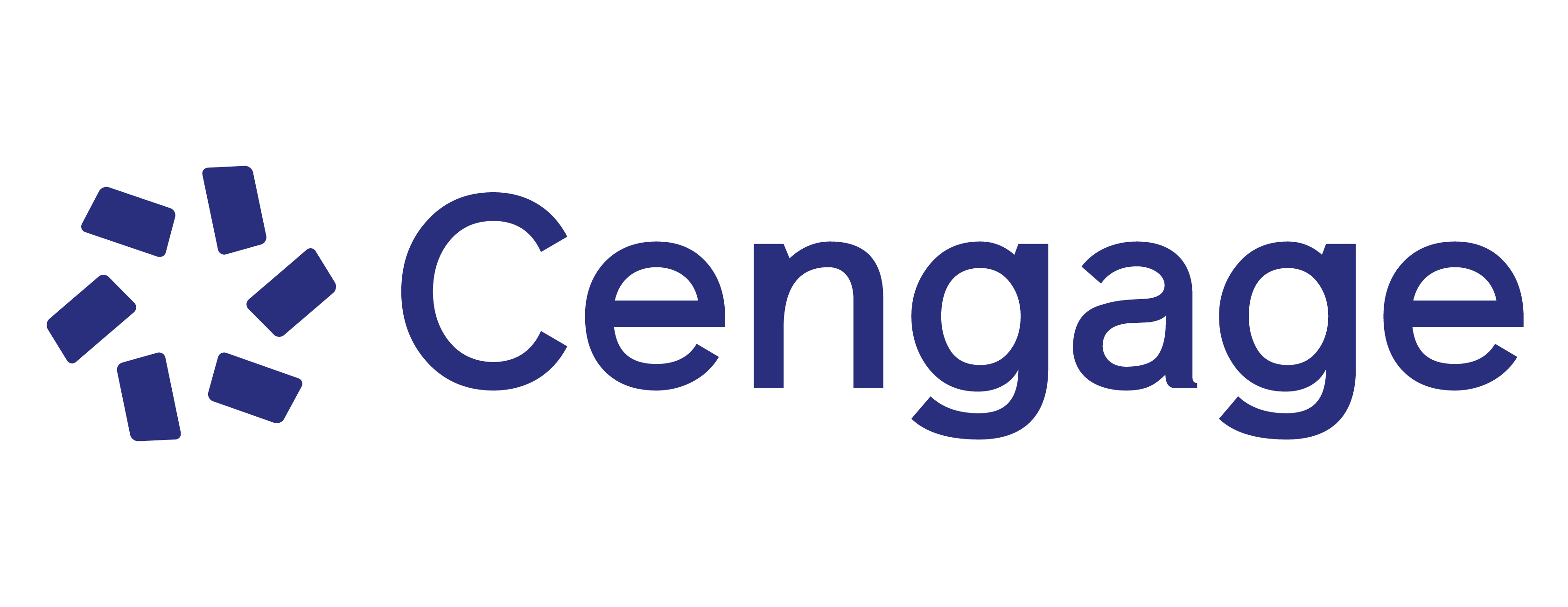COLLEGE ALGEBRA AND CALCULUS: AN APPLIED APPROACH, Second Edition provides a comprehensive resource for college algebra and applied calculus courses. The mathematical concepts and applications are consistently presented in the same tone and pedagogy to promote confidence and a smooth transition from one course to the next. The consolidation of content for two courses in a single text saves instructors time in their course--and saves students the cost of an extra textbook.
0. FUNDAMENTAL CONCEPTS OF ALGEBRA.
Real Numbers: Order and Absolute Value. The Basic Rules of Algebra. Integer Exponents. Radicals and Rational Exponents. Polynomials and Special Products.
Factoring. Fractional Expressions.
1. EQUATIONS AND INEQUALITIES.
Linear Equations. Mathematical Modeling. Quadratic Equations. The Quadratic Formula. Other Types of Equations. Linear Inequalities. Other Types of Inequalities.
2. FUNCTIONS AND GRAPHS.
Graphs of Equations. Lines in the Plane. Linear Modeling and Direct Variation. Functions. Graphs of Functions. Transformations of Functions. The Algebra of Functions.
3. POLYNOMIAL AND RATIONAL FUNCTIONS.
Quadratic Functions and Models. Polynomial Functions of Higher Degree. Polynomial Division. Real Zeros of Polynomial Functions. Complex Numbers. The Fundamental Theorem of Algebra. Rational Functions.
4. EXPONENTIAL AND LOGARITHMIC FUNCTIONS.
Inverse Functions. Exponential Functions. Logarithmic Functions. Properties of Logarithms. Solving Exponential and Logarithmic Equations. Exponential and Logarithmic Models.
5. SYSTEMS OF EQUATIONS AND INEQUALITIES.
Solving Linear Systems Using Substitution. Solving Linear Systems Using Elimination. Linear Systems in Three or More Variables. Systems of Inequalities. Linear Programming.
6. MATRICES AND DETERMINANTS.
Matrices and Linear Systems. Operations with Matrices. The Inverse of a Square Matrix.
The Determinant of a Square Matrix. Applications of Matrices and Determinants.
7. LIMITS AND DERIVATIVES.
Limits. Continuity. The Derivative and the Slope of a Graph. Some Rules for Differentiation. Rates of Change: Velocity and Marginals. The Product and Quotient Rules. The Chain Rule.
8. APPLICATIONS OF THE DERIVATIVE.
Higher-Order Derivatives. Implicit Differentiation. Related Rates. Increasing and Decreasing Functions. Extrema and the First-Derivative Test. Concavity and the Second-Derivative Test.
9. FURTHER APPLICATIONS OF THE DERIVATIVE.
Optimization Problems. Business and Economics Applications. Asymptotes. Curve Sketching: A Summary. Differentials and Marginal Analysis.
10. DERIVATIVES OF EXPONENTIAL AND LOGARITHMIC FUNCTIONS.
Exponential Functions. Natural Exponential Functions. Derivatives of Exponential Functions. Logarithmic Functions. Derivatives of Logarithmic Functions. Exponential Growth and Decay.
11. INTEGRATION AND ITS APPLICATIONS.
Antiderivatives and Indefinite Integrals. Integration by Substitution and The General Power Rule. Exponential and Logarithmic Integrals. Area and the Fundamental Theorem of Calculus. The Area of a Region Bounded by Two Graphs. The Definite Integral as the Limit of a Sum.
12. TECHNIQUES OF INTEGRATION.
Integration by Parts and Present Value. Integration Tables. Numerical Integration. Improper Integrals.
13. FUNCTIONS OF SEVERAL VARIABLES.
The Three-Dimensional Coordinate System. Surfaces in Space. Functions of Several Variables. Partial Derivatives. Extrema of Functions of Two Variables. Lagrange Multipliers. Least Squares Regression Analysis. Double Integrals and Area in the Plane. Applications of Double Integrals.
14. TRIGONOMETRIC FUNCTIONS.
Radian Measure of Angles. The Trigonometric Functions. Graphs of Trigonometric Functions. Derivatives of Trigonometric Functions. Integrals of Trigonometric Functions.
15. SERIES AND TAYLOR POLYNOMIALS.
Sequences and Summation Notation. Arithmetic Sequences and Partial Sums. Geometric Sequences and Series. Series and Convergence. p-Series and the Ratio Test. Power Series and Taylor's Theorem. Taylor Polynomials. Newton's Method.
16. PROBABILITY.
Counting Principles. Probability. Discrete and Continuous Random Variables. Expected Value and Variance. Mathematical Induction. The Binomial Theorem.
Appendix A: An Introduction to Graphing Utilities.
Appendix B: Conic Sections.
Conic Sections. Conic Sections and Translations.
Appendix C: Further Concepts in Statistics.
Data and Linear Modeling. Measures of Central Tendency and Dispersion.
Appendix D: Precalculus Review.
The Real Number Line and Order. Absolute Value and Distance on the Real Number Line. Exponents and Radicals. Factoring Polynomials. Fractions and Rationalization.
Appendix E: Alternate Introduction to the Fundamental Theorem of Calculus.
Appendix F: Differential Equations.
Solutions of Differential Equations. Separation of Variables. First-Order Linear Differential Equations. Applications of Differential Equations.
Appendix G: Formulas.
Differentiation and Integration Formulas. Formulas from Business and Finance.
Appendix H: Properties and Measurement.
Review of Algebra, Geometry, and Trigonometry. Units of Measurements.
Appendix I: Graphing Utility Programs.
Appendix J: Mathematical Induction.
-
Ron Larson
Dr. Ron Larson is a professor of mathematics at the Pennsylvania State University, where he has taught since 1970. He is considered the pioneer of using multimedia to enhance the learning of mathematics, having authored more than 30 software titles since 1990. Dr. Larson has also written numerous acclaimed textbooks, including the best-selling Calculus Series published by Cengage. He is the recipient of the 2017 William Holmes McGuffey Longevity Award for PRECALCULUS, the 2018 Text and Academic Authors Association TEXTY Award for CALCULUS: EARLY TRANSCENDENTAL FUNCTIONS and the 2017 William Holmes McGuffey Longevity Award for CALCULUS. He also received the 1996 Text and Academic Authors Association TEXTY Award for INTERACTIVE CALCULUS -- a complete text on CD-ROM that was the first mainstream college textbook to be offered on the internet.
-
Anne V. Hodgkins
Anne Hodgkins received her Ed.D. in higher education from Texas A&M University at Commerce in 1990. She has taught at the secondary, community college and university levels. She currently teaches at Phoenix College in Phoenix, Arizona. She especially enjoys teaching intermediate and college algebra as well as calculus. Her interests include math education and research in mathematics teaching strategies.
-
New! A Summarize feature guides students in creating section-level concept summaries-- helping them process and organize key concepts while providing a valuable study tool.
-
New! How Do You See It? exercises ask students to draw conclusions about information presented visually. Requiring little or no calculation, these exercises check students' conceptual understanding of key concepts.
-
New and Updated! Projects, which appear in selected sections, connect real-life data and applications and give your students the opportunity to generate and analyze mathematical models from large data sets.
-
New! CourseMate brings course concepts to life with interactive learning, study, and exam preparation tools that support the printed textbook. Watch student comprehension soar as your class works with the printed textbook and the textbook-specific website.
-
New! A Summarize feature gives you an easy way to create section-level summaries, helping you process and organize key concepts while providing a valuable study tool.
-
New! How Do You See It? exercises ask you to draw conclusions about information presented visually. Requiring little or no calculation, these exercises check your conceptual understanding of key concepts.
-
New and Updated! Projects, which appear in selected sections, connect real-life data and applications and give you the opportunity to generate and analyze mathematical models from large data sets.
-
New! The more you study, the better the results. CourseMate allows you to make the most of your study time by accessing everything you need to succeed in one place. Read your textbook, take notes, review flashcards, watch videos, and take practice quizzes--online with CourseMate.
-
Every section begins with a list of objectives that highlights the learning outcomes of that section and provides instructors with a tool for lesson planning.
-
Appearing in the middle of each chapter, Mid-Chapter Quizzes are single-page tests that let students practice skills and concepts learned in the chapter. This opportunity for self-assessment helps uncover potential weaknesses that might require further review of the material.
-
Revised! Section-ending Business Capsules and accompanying exercises address business situations related to the mathematical concepts covered in the chapter.
-
Revised! At the beginning of each exercise set, Skills Warm Up exercises give students practice of skills covered in previous sections that are used in the exercise set; answers are provided at the back of the text to reinforce understanding.
-
Revised! The Exercise Sets have been revised based on actual student usage data to improve student comprehension. More than 7,000 exercises progress from skill-development problems to more challenging, real-world applications--all of which can be customized to the difficulty level of the instructor's choice.
-
A wide variety of relevant examples--each of which is titled for easy reference--includes solutions presented graphically, analytically, and/or numerically to provide further insight into mathematical concepts. Examples that illustrate real-life situations are identified with an icon.
-
For instructors who wish to incorporate technology, optional Tech Tutor boxes provide guidance on using technology to ease lengthy calculations, present a graphical solution, or discuss where using technology can lead to misleading or wrong solutions. In addition, exercises requiring technology are identified with a graphing calculator icon.
-
Every section begins with a list of objectives that highlights the skills and concepts you should learn in the section.
-
Following every example, Checkpoint presents a similar problem giving you immediate practice of skills and concepts.
-
Algebra Tutors appear throughout each chapter and offer point-of-use algebra support. A two-page expanded Algebra Tutor appears at the end of every chapter, and includes additional detailed examples with solutions and explanations.
-
Tech Tutor boxes provide guidance on using technology--graphing calculators, computer graphing programs, and spreadsheet software such as Excel--to ease lengthy calculations, present a graphical solution, or discuss where using technology can lead to misleading or wrong solutions. Exercises requiring technology are identified with a graphing calculator icon.
-
Used throughout the exposition, Study Tips address special cases, expand on concepts, and help you avoid common errors.
PowerLecture for Larson/Hodgkins' College Algebra and Calculus: An Applied Approach, 2nd
9781133109471
Solutions Builder for Larson's College Algebra & Calculus: An Applied Approach, 2nd
9781133109198


